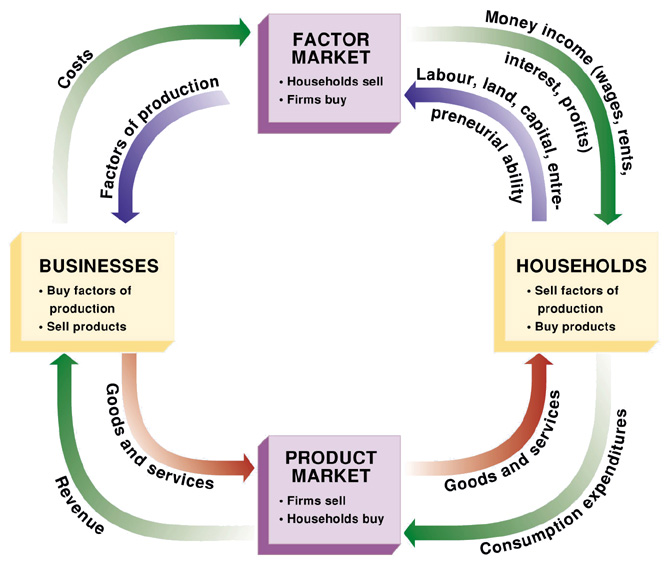The Circular Flow Diagram
Appearance
| This article is part of the EconHelp Tutoring Wiki |
In economics, the circular flow diagram represents the organization of an economy in a simple economic model. This diagram contains, households, firms, markets for factors of production, and markets for goods and services.
The flow of inputs and outputs
- Households provide the factors of production (labour, land, and capital) to the firms through the markets for factors of production. The firms will then use these factors of production to produce goods and services to be sold in the markets for goods and services. The households will then buy these goods and services from the firms through the market for goods and services.
The flow of dollars
- Firms pay wages, rent, and profit to the households for their supply of the factors of production in the market for factors of production. Households will use these income to spend on goods and services supplied by the firms in the market for goods and services. When households spend money on these goods and services, firms will earn a revenue which can then be reinvested to obtain more factors of production.
NOTE: The capital that is mentioned as a factor of production is not money. Instead, it is machines and equipments that are needed in the production process.
Back to EconHelp
